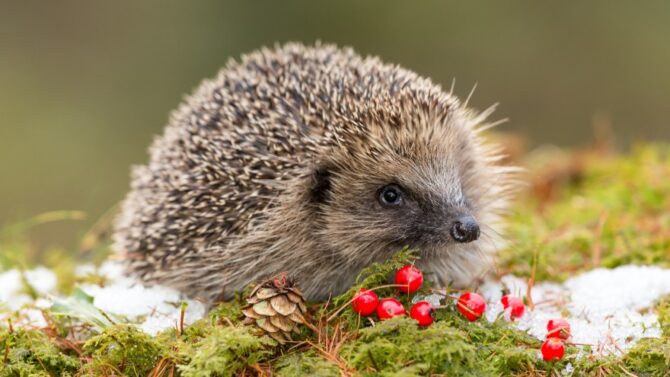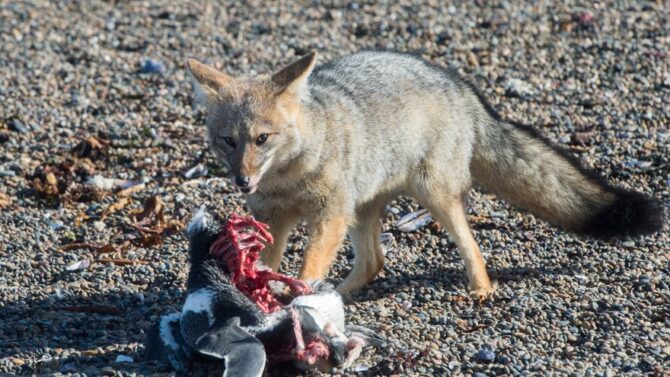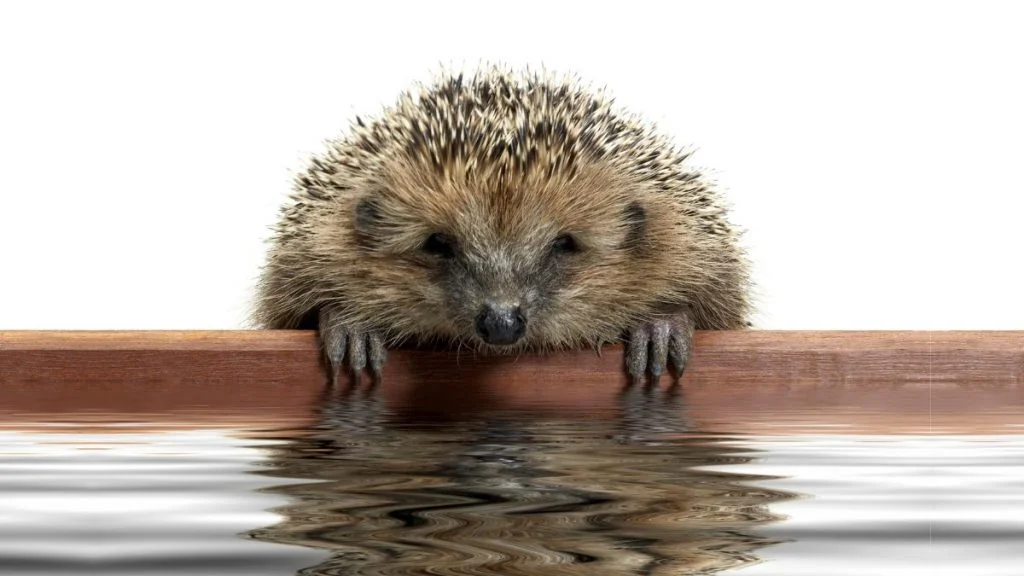Hedgehogs are spiny mammals, otherwise known as pincushions, with legs because of the spikes located on their back.
They’re often mistaken for marsupials, which they are not: marsupials tend to be born before they are fully developed and are carried around in their mother’s little pouches, while hedgehogs are placental mammals.
There’s much to learn about this animal and its place in the food chain. But what do hedgehogs eat?
The hedgehog’s diet mostly consists of invertebrates: worms, beetles, slugs, caterpillars, earwigs, fly larvae, and millipedes. They also consume insects.
However, if they come across carrion, fallen fruits, and bird nests with eggs still in them, they’ll eat them!
Read on to learn more about their eating habits.
Hedgehog Diet: What Do Hedgehogs Eat?

Hedgehogs are omnivorous animals. This simply means that they eat plants and animals.
They are what we call opportunistic feeders because they will happily take advantage of every opportunity to eat anything readily available.
Hedgehogs will eat mushrooms, fruits that have fallen from trees, pinkie mice, baby birds, eggs, frogs, and baby rodents.
Typically, hedgehogs eat invertebrates such as beetles, caterpillars, earwigs, earthworms, millipedes, fly larvae, slugs, and snails. They also eat insects.

Humans trying to replicate a hedgehog’s diet (wild and domesticated) should feed it meat-based dog and cat foods, hedgehog foods, and dog and cat biscuits.
Don’t leave milk out for them; they are lactose intolerant. It could kill them.
How Do Hedgehogs Eat?
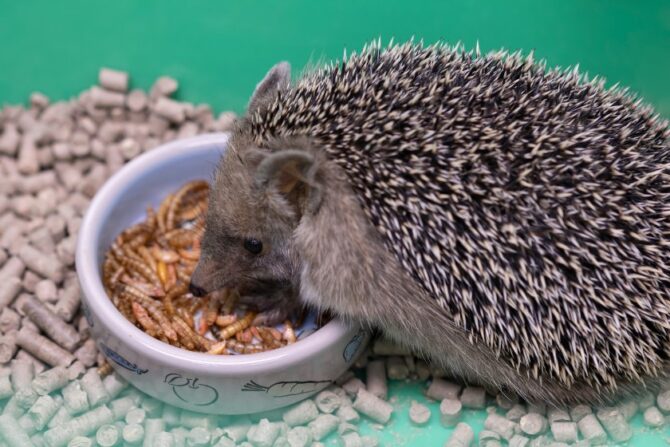
Hedgehogs are nocturnal foragers who hunt their food by sniffling through the undergrowth, hedgerows, and damp spots that enable invertebrates to thrive.
Their eyesight is poor, but nature gives them a keen sense of smell and good hearing, which makes it much easier for them to feed themselves.
When they come across an animal or plant that they consider dinner, they grab it and put it directly in their mouth. They don’t toy with their meals.
How Many Times Do Hedgehogs Need To Eat?
Hedgehogs are nocturnal creatures, so their day begins a little after dusk.
When you’re a new pet hedgehog owner, you’d love to know how often you can feed your pet without doing it harm.
Some old owners recommend you feed your little pincushion once or twice a day. Most suggest you keep their food bowl perpetually full.
Both suggestions have their merits, but you should know that hedgies are gluttons and will overeat if you let them. This could lead to obesity.
Baby hedgehogs, on the other hand, need a constant supply of food as they’re incapable of hunting for themselves.
Wild hedgehogs do not depend on humans for survival.
However, should you want to feed one or help it in its search for nourishment, you can offer it dry hedgehog food or crushed dry dog or cat biscuits.
You should leave about 25 grams of food which is about one-third of what a hedgehog eats per night.
Related: Can Hedgehogs Eat Pumpkins?
What Animals Prey on Hedgehogs?
The cycle of life operates on the law that as you eat, you will eventually be eaten.
Even hedgehogs, with their defensive spikes and their ability to swim and hide, are preyed upon!
One would think that their spikes will make them unattractive meals to predators, and while this is true to an extent, some predators still enjoy hedgehog meat!
Hedgehogs are mostly hunted by badgers, foxes, birds( especially the Eurasian eagle owl), wolves, and mongooses.
When on the defensive, it’s not likely any animal can attack a hedgehog.
The best way to get to them and feed them is to take them by surprise, which is what all their predators do.
When captured, their soft underbelly is what is eaten first.
Why are Hedgehogs Endangered?
Surprisingly enough, all the predators mentioned above have little or nothing to do with the steady decline of the hedgehog population.
Though badgers are hedgehogs’ number one threat in the UK, it has been noted that in places where the badger population is almost insignificant, hedgehogs are still going extinct.
The true cause of the slowly diminishing hedgehog species is humans.
How? Humans in the agricultural sector are destroying their habitats through large-scale farming.
Their constant use of pesticides and insecticides causes the death of thousands of insects and invertebrates daily, which are the hedgehogs’ main food source.
When it realizes that its current environment is hampering survival, it tends to move into the urban area and attempts to live in residential gardens.
Sadly, residential gardens are getting sparser in vegetation, with no bushes or hedges to be found.
This makes it very inconvenient for the hedgehog wanting to take abode.
The construction of fences and walls everywhere hinders their ability to migrate, thus halting their mating process and endangering the species.
What Can You Do To Help Hedgehogs?
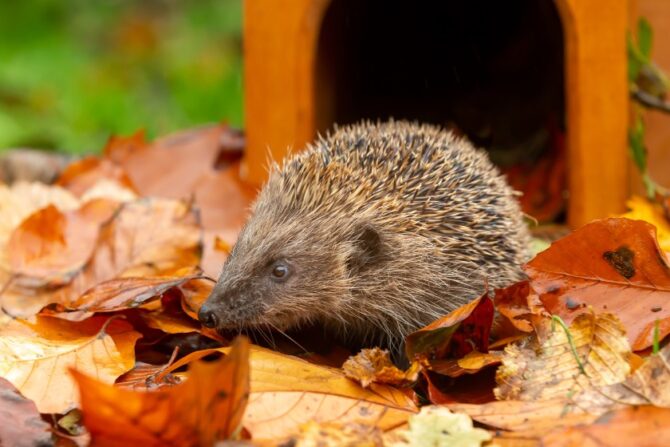
Make small entrances
Fences and walls built by humans restrict the distances hedgehogs can go in safe zones.
They find themselves having to cross the road very often. Building small entryways will help the roam around.
You can also discuss with your neighbors, and together you can all decide to build little entrances so that hedgehogs can go farther distances.
Plant a hedge
It grants easy access between gardens, and there are enough rooms for fallen leaves to accumulate beneath it.
This makes it the perfect habitat for hedgehogs because they can hibernate, forage for meals and easily raise their young.
Ensure your pond is hedgehog friendly
Although hedgehogs can swim, they tire easily. So when building a pond, keep it shallow with sloping sides so that they can exit easily.
Don’t strim without checking!
So many hedgehogs are victims of strim wounds that could have been easily avoided if people could have bothered themselves to quickly check their environment first.
Next time you want to strim, make sure there are no hedgehogs around. If you find any, move it to a safer place.
Leave out extra food
Hedgehogs are very much capable of feeding themselves through natural resources.
Still, you can make things easier for them by leaving out supplementary food immediately before or after the hibernation period.
Cultivate native plants
Hawthorn, dog rose, blackthorn, and honeysuckle are native plants that constitute food sources for different types of moths.
These animals eventually lay their eggs, which will later become caterpillars on these plants. Passing hedgehogs feed on them.
Related Questions
Why are they called hedgehogs?
Formally known as urchins, it got the name hedgehog because of its interesting hunting methods.
It roots through hedges and undergrowth in the search of the different animals that constitute most of its diet.
What human foods can hedgehogs eat?
Hedgehogs can eat fruits. Their favorites are apples, bananas, berries, and lemons. They can also eat vegetables: fresh tomatoes, fresh green beans, and cooked squash will be much enjoyed by your hedgehog.
Avoid giving them starchy vegetables like corn, potatoes, carrots, and dried vegetables.
Conclusion
Hedgehogs are fun creatures to study. How many creatures do you know that have spikes they use to cover themselves when they feel threatened?1
However, they’re considered an endangered species by some locals.
This is due to constant environmental development by humans, which forces them out of their habitats and destroys their food sources.
To fight this, we should move these animals to safe places before undertaking any procedure that can change our environment.
References & Notes
- Hedgehog. Wikipedia.
